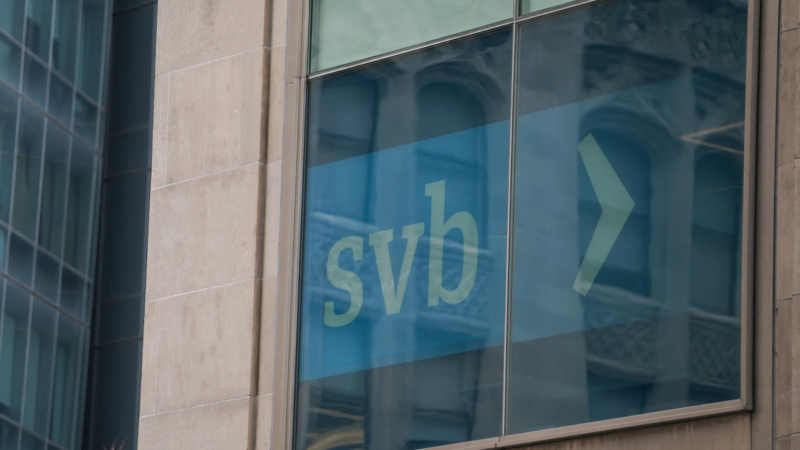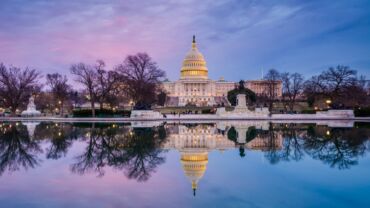The failure of Silicon Valley Bank and a few others has led regulators to swing the pendulum too far toward more draconian capital solutions
U.S. bank regulators recently unveiled sweeping proposals to raise capital for the country’s largest banks by around 16%, or about $200 billion. The proposed capital charges stunned many in the banking industry and prompted dissent among policymakers at the U.S. Federal Reserve and the Federal Deposit Insurance Corporation (FDIC) — something one rarely sees.
The question that emerges is why such draconian capital charges are needed when regulators have long said that the U.S. banking system is resilient and well-capitalized. “The banking agencies are in the same bind parents are with their children,” said Karen Petrou, managing partner of Federal Financial Analytics, a Washington, D.C. consultancy. “They want to tell the world how clever their kids are so no one thinks the kid is at-risk or the parent is neglectful. But, at home, they demand lots more homework and far better grades. The agencies’ rhetorical dance results from their desire to reassure financial markets yet chastise banks.”
While markets came unglued after the failure of Silicon Valley Bank (SVB) in March, the so-called mini-banking crisis was exactly that — but swift regulatory action suppressed any additional market contagion or stress. If anything, the largest banks in the United States, the global systemically important banks (G-SIBs), benefited from the crisis and witnessed massive deposit inflows.
The jointly proposed amendments from the Fed, FDIC, and the Office of the Comptroller of the Currency would substantially revise capital requirements for large banking organizations to be consistent with international capital standards issued by the Basel Committee on Banking Supervision (Basel III Endgame). Should the proposed capital charges become finalized after a lengthy comment period, large U.S. banks — including those with $100 billion in assets or more — would become the most fortified in the industrialized world, with capital levels well above those mandated by the Basel III rules.
What problem are we trying to solve?
The proposed capital requirements raise numerous questions about the actual resiliency of large U.S. banks. As Fed governor Christopher Waller said in his dissenting comment — one of two dissents from the Fed board: “As an economic policymaker, I always ask, ‘What problem is solved from this proposal? What are the benefits of the proposal?'”
Waller then focused on the fundamental question: “If the answer is improved resiliency, then I want to know why the current capital framework does not provide an adequate level of resiliency. What empirical evidence shows that the current level of resilience is insufficient, particularly for the U.S. G-SIBs? Will increasing requirements for those banks indeed improve the resiliency of the entire financial system? Or will it just narrow the banking system and push more activities to the unregulated non-bank sector?”
His Fed Board colleague, Michelle Bowman, who also dissented, offered a clue as to what lies behind the radical changes. “Today’s capital proposal could give the impression that undercapitalization of large banks is a major vulnerability in the U.S. banking system, or that higher capital levels would have addressed the management and supervisory shortcomings that contributed to the recent bank failures earlier this year,” Bowman said. “While there is more to learn about the recent bank failures, it seems apparent that these failures were caused primarily by poor risk management and deficient supervision, not by a lack of capital.”
Is Barr drawing the wrong lesson from SVB’s demise?
Michael Barr, vice chair for supervision at the Fed, is the primary architect of the proposed capital rules. The demise of SVB and two other banks was the first crisis on his watch since stepping into the role in July 2022.
During a speech at the Bipartisan Policy Center last month, in which he provided broad outlines of his plans to raise capital charges, Barr said an overhaul was justified by the failures of large lenders, including SVB. “The events of this year reinforce the need for strong capital in the system,” Barr said in response to a question at the event. “Many people thought of systemic risk as just being about the global systemically important banks and not about other institutions that were large and could cause problems. I think that was a mistake.
“The failures of SVB and other banks this spring were a warning that banks need to be more resilient, and need more of what is the foundation of that resilience, which is capital,” Barr added.
Is it as Fed chair Jerome Powell said in his own cautious assessment of Barr’s capital plan that the “U.S. banking system is sound and resilient, with strong levels of capital and liquidity.” Or perhaps, it is the opposite and therefore in need of what Barr has put forward.
Rhetoric vs. reality
Central bankers choose their words carefully for a reason — markets, investors, and the public place a huge amount of trust in them to do the right thing.
If their actions do not match their rhetoric, then confusion and uncertainty is a natural outcome. Uncertainty is never good for markets, and it can be fatal for confidence in banks, policymakers, and the broader financial system. Under Powell’s leadership, the Fed has made great strides in providing transparency about its future monetary policy intentions.
The latest proposals on regulatory capital seem out of step with that behavior, however, leading to more questions about the future financial health of large banks.
It may be understandable that Barr feels a need to be aggressive in his policy response to SVB’s failure and the risks uncovered. But by the Fed’s own post-mortem, the capital was not at the core of SVB’s problems — it was poor risk management and lax supervision.
Barr and his fellow regulators will face a torrent of questions during the extended public comment period on the new capital rules that runs until November 30. High on the list will be questions not only of why such large capital charges are necessary to instill resiliency into the system but also what the costs and unintended consequences of these regulations might be.
On both fronts, there has been a lack of clarity.







